Adding Vertical Beauty to Your Garden with Climbing Plants

Climbing plants and wall shrubs are like nature’s decorators, transforming dull walls, fences, and supports into vibrant green tapestries. Whether you have limited planting space or want to attract wildlife, these versatile plants offer both beauty and function.
How do climbers climb?
It’s important to know this, so you know where to use the different types of plants effectively.
Ivy gets a bad rap due to the way it creeps up walls and appears to take over. It has aerial roots which clings to the thing its climbing over and can easily get engrained into brickwork and cement as it grows, so when it’s removed it can pull the structure away with it.
Sweet peas have tendrils which curl around any convenient support to gently clamber over bamboo canes and netting.
The third way is the whole stem will entwine itself around the support such as Wisterias and Honeysuckles.

Choosing Supports:
Once you know how the plants climb, you can choose the best support for them and that suits your garden style.
With Sweet Peas, you can keep it simple and use bamboo canes and tie them at the top, wig-wam style.

Larger structures such as pergolas and arches are ideal for ‘heavier’ plants such as Wisteria and Roses. Choose a support that is both functional and decorative that suits your garden style. Supports made from wood are ideal for a traditional cottage garden compared to metal which can have a more contemporary vibe.
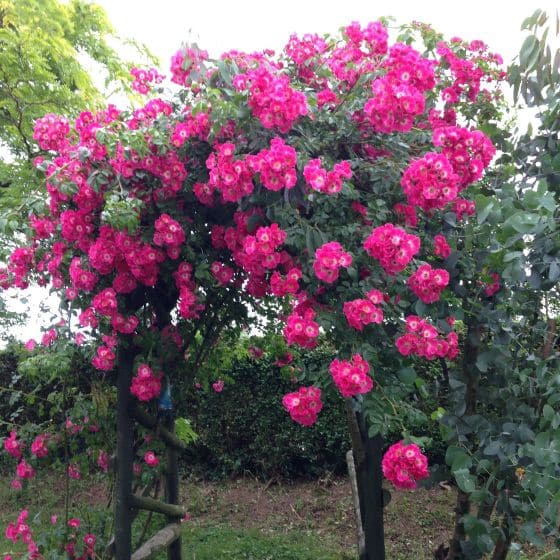

Which Climber is best?
With so many to choose from, here’s a few ideas to help you get started.
Clematis: Are really popular thanks to their gorgeous flowers in lots of colours. If you plan it right, you can use different varieties to flower nearly all year round. They’re great for rambling through other plants too. And if you have a narrow border, they can be used to carry the colour scheme of the border beneath, up the wall/fence. Their flowers are different sizes so that can also add interest to the garden if you choose to plant several varieties.
Clematis ‘Jingle Bells’ is evergreen and grows to around 4m. Prefers full or part sun. Happy in all soils except clay, so if you have clay soil, it’s best to plant it in a pot. Flowers from November to February/March so its great for winter interest.
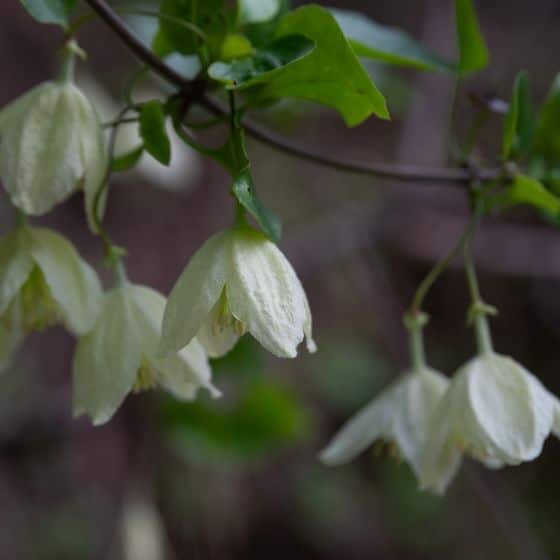
Clematis ‘Ville de Lyon’ is a striking pink variety which flowers from June to September and prefers to be planted into the ground in a sunny or part sunny spot. It’s not scented unfortunately.

Pruning Clematis encourages strong growth and flowering and also keeps the growth in check. If left unpruned, clematis can turn into a mass of tangled stems with bare base and flowers well above eye level. Depending on the variety depends on when you prune it, so check with the plant label which group it belongs to:
- Pruning Group 1: Prune mid- to late spring, after flowering and once the risk of frost has passed
- Pruning Group 2: Prune in February and after the first flush of flowers in early summer
- Pruning Group 3: Prune in February
If you want a climber to give the WOW factor, I can recommend the orange trumpet flower called Campsis grandiflora. This photo was taken on my show garden at BBC Gardeners’ World Live and everyone wanted to know the name and where to get it from.
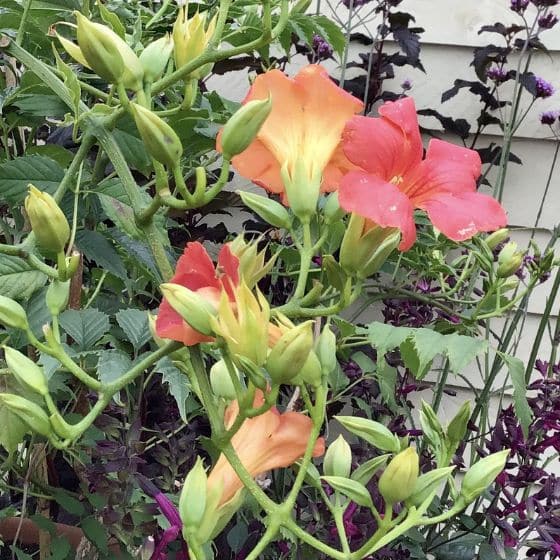
Scented Climbers:
You can’t go wrong with Honeysuckle and Jasmine – they really do have a gorgeous scent. Ideal to plant around paths and walkways so you can enjoy them even more! Do check the plant label before buying as not all varieties are scented.
Honeysuckle (Lonicera): Fragrant and easy to grow, honeysuckle attracts pollinators which makes it ideal for a wildlife garden. If you have a smaller space, you can grow a variety called ‘Rhubarb and Custard’ which is highly scented, a beautiful colour followed by red berries in the autumn. It grows to around 2m tall, so its perfect for a pot on a balcony or patio.
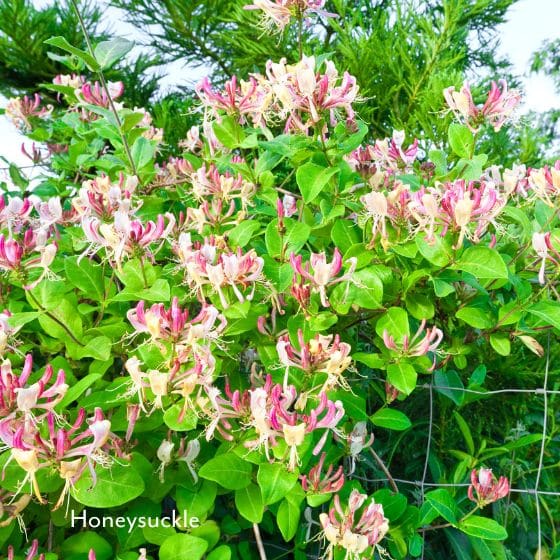
Trachelospermum jasminoides:
This plant is evergreen and can grow to around 6m, so it’s best to trim it after flowering to keep it at the desired height. Plant in partial shade in well-drained soil or grow in large container on a sheltered site. Ideal for screening sheds and garages.

Evergreen Climbers:
As mentioned earlier, Jasmine and Clematis ‘Jingle Bells is evergreen, but another plant to consider is the climbing Hydrangea. Great for shady spots and covering unsightly walls. Its white flowers and lush foliage create a calming effect too.
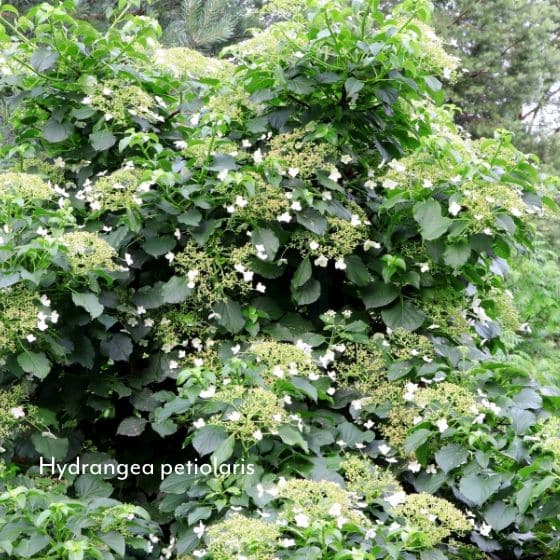
Wisteria: Known for its cascading purple or white flowers, adds drama to pergolas and trellises. I think we all dream of those picture perfect archways with the Wisteria cascading down. Wisterias are sun lovers and will grow in any well-drained soil, and they will also grow happily in light shade, but will produce fewer flowers. Avoid total shade. If left un-pruned, they can mature to 10-20m and will happily cover the front of a sunny house. They are really beautiful when they’re in full flower!
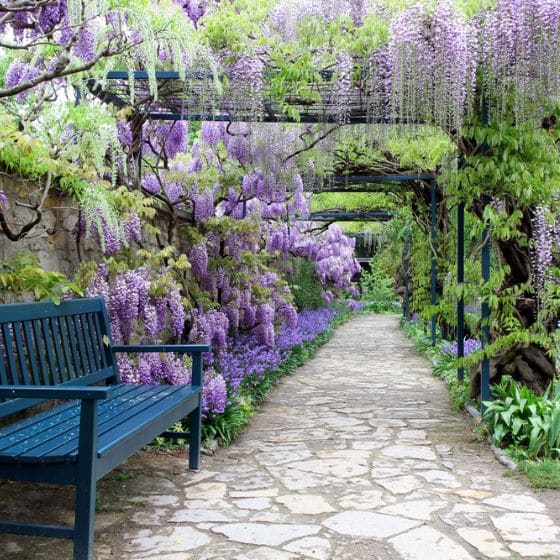
Planting Tips
Soil: Most climbers thrive in well-draining soil. Choose container friendly climbers if you have clay soil.
Supports: Sturdy trellises, obelisks, and wires provide the necessary structure for climbers but you may need to tie in the shrubs for added stability.
Watering: Regular watering is essential, especially for climbers near walls that shelter them from rain.
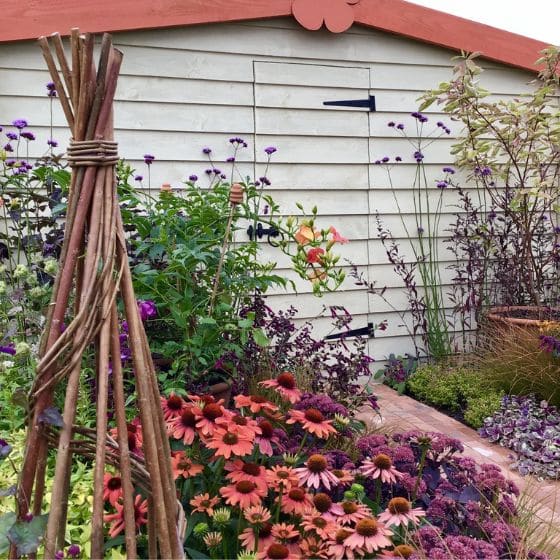
Jewel Garden for Bees by Border in a Box
BBC Gardeners’ World Live
 Free Delivery
Free Delivery Upgrade to 24 Hour Tracked Delivery
Upgrade to 24 Hour Tracked Delivery

